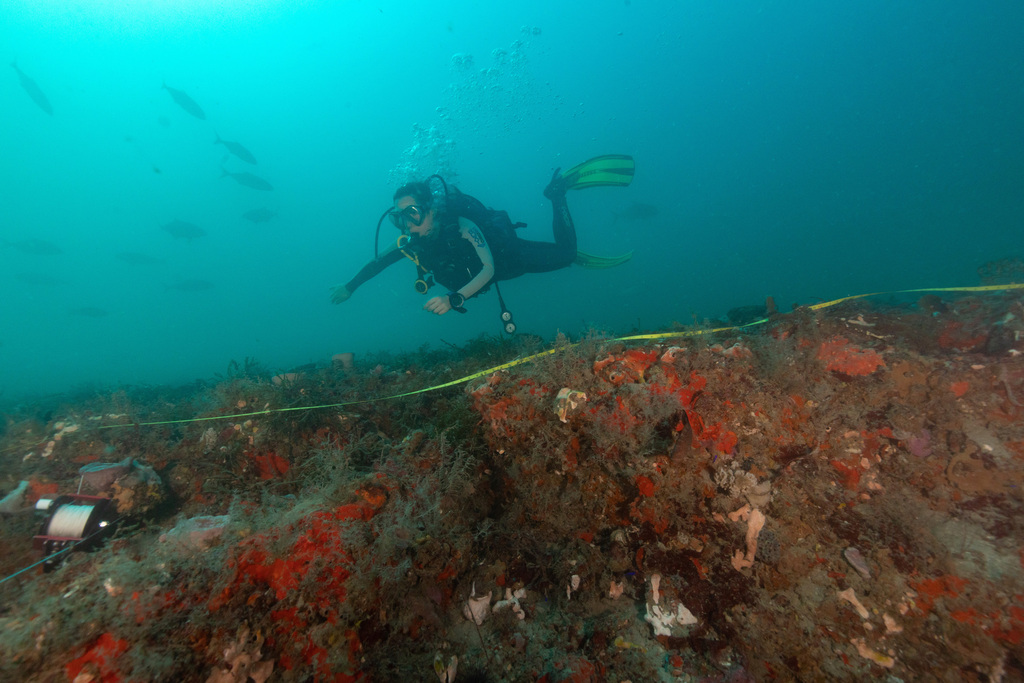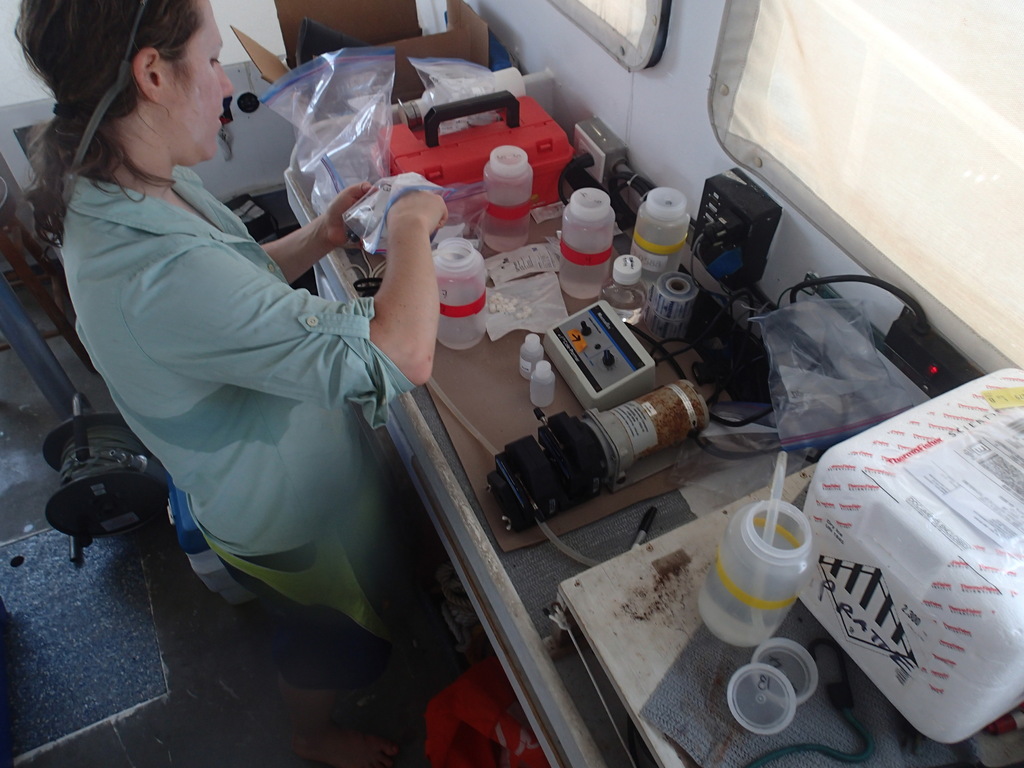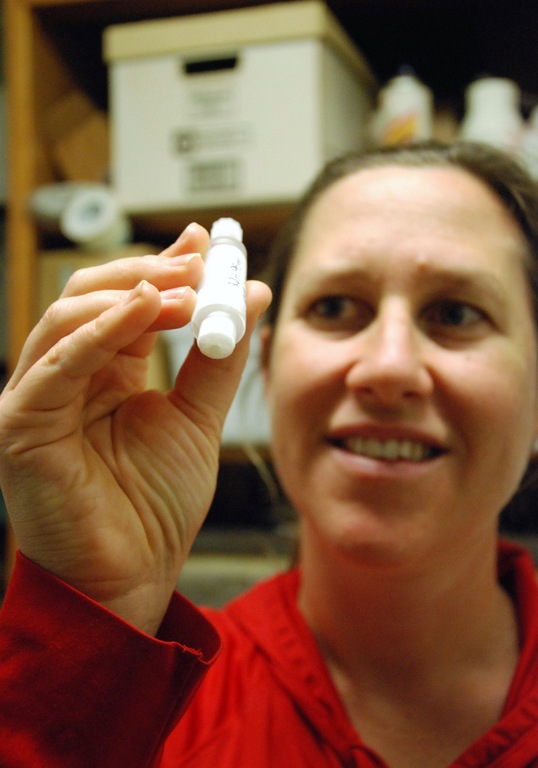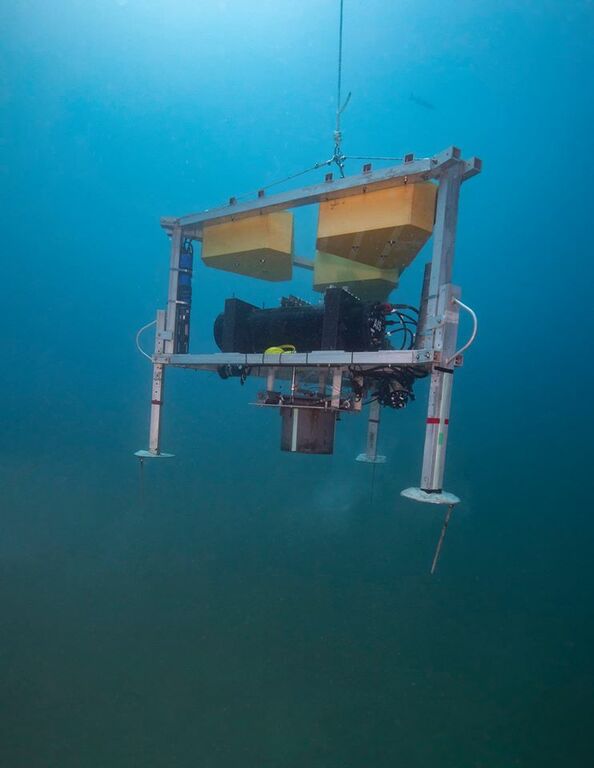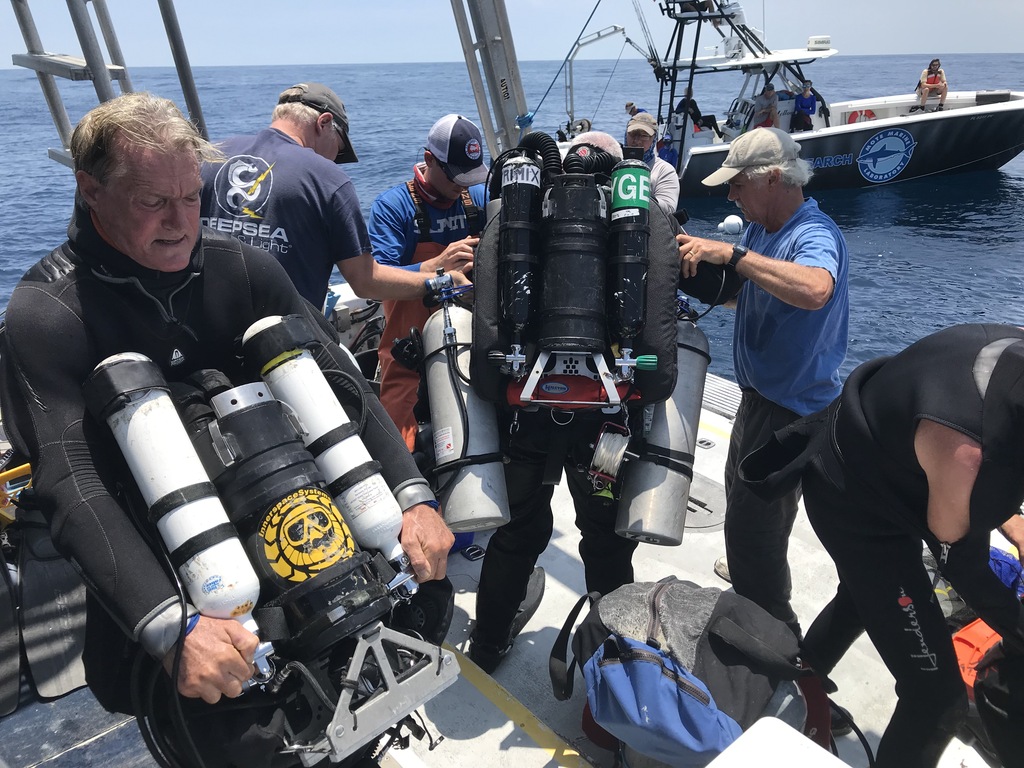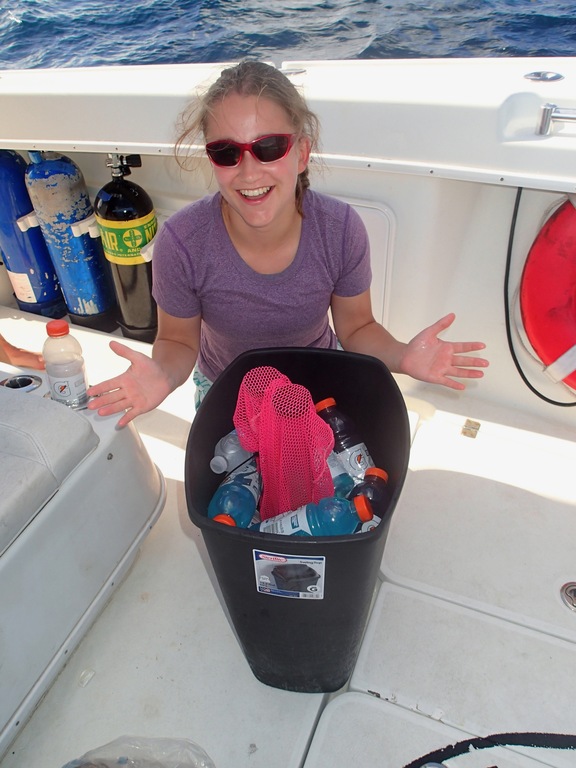Behind the science:
Gulf of Mexico blue hole harbors high levels of novel microbial lin...
2021, March 12
Posted by Veronica Radice
Fields
Molecular ecology
Oceanography
Focusgroups
Bacteria and Archaea
Locations
USA - Gulf of Mexico
Platforms
In-situ instrumentation
SCUBA (open-circuit or unspecified)
Surface-deployed sensors and samplers
“Microbial communities and biogeochemistry of a mesophotic blue hole”
What was the most challenging aspect of your study (can be anything from field, lab to analysis)?
The most challenging aspect was probably the sampling logistics. We transported technical divers (and all their gear), the benthic lander, and all the scientists out to Amberjack several days in a row using only two boats. Lowering and retrieving the benthic lander from the bottom of Amberjack was a huge challenge! The hole opening is narrow enough that we needed technical divers to guide the instrument and prevent it from hitting the walls. This procedure took a rare combination of oceanographic ship infrastructure (A-frame with winch and pulley) as well as technical divers and all their associated gear. There were a couple dicey moments on a day when the seas were a little choppy, but in the end all the deployments were successful! Another challenging part for me was bringing together all the data sets from the different science teams and presenting it as one holistic story. In particular, incorporating the redox chemistry data with the microbial metagenomes was super challenging, but very fun. I learned a lot and the experience of writing the paper definitely made me a better scientist.
What was the most memorable moment in undertaking this study?
The most memorable moment for me was participating in the biological surveys at the rim of Amberjack, when I got to SCUBA dive and get a look at the environment that we were studying. The fish and invertebrate life at the rim was incredibly beautiful, and it’s always nice to see your study site in real life!
What was your favorite research site in this study and why?
We only visited Amberjack hole in this first study, and look forward to visiting other blue holes in the future.
Other than your co-authors, with whom would you like to share credit for this work?
I want to mention one co-author in particular: my undergraduate mentee, Zoe Dietrich. She tackled the data set from the first expedition and did such a fantastic job we brought her down to Florida for the second expedition. She was invaluable to collecting the data during that second trip, not to mention a delight to have around in the field! I also want to acknowledge the volunteer technical divers, who guided the lander into and out of Amberjack, and took water and sediment samples for us. They were absolutely crucial to the study and their dedication and professionalism was inspiring.
Any important lessons learned (through mistakes, experience or methodological advances)?
We definitely learned a lot about how to collect water from a deep, narrow hole! We ended up using a combination of hand-collected samples (thanks to the technical divers) and hand-cast Niskin bottles, which we had to trigger manually. One day we spent several hours just sending down bottles and retrieving them by hand while the boat had to stay in position over the hole. It would be great if we could get an ROV down there, but that’s unlikely to happen for this project.
Can we expect any follow-up on this work?
Yes! We have already made a first visit to a second hole, Green Banana, which seems to be quite different from Amberjack. We are hoping to make a second trip later this year. Stay tuned!
Featured article:
|
|
Gulf of Mexico blue hole harbors high levels of novel microbial lineages | article Patin NV, Dietrich ZA, Stancil A, Quinan M, Beckler JS, Hall ER, Culter J, Smith CG, Taillefert M, Stewart FJ (2021) ISME J 15:2206–2232 |
|
